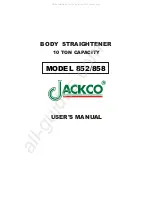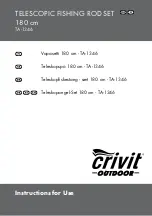
2 Installation
2.1 Planning the Installation Site
NOTE
Before performing the installation it is important to plan
the installation of the frequency converter. Neglecting this
may result in extra work during and after installation.
Select the best possible operation site by considering the
following (see details on the following pages and the
respective Design Guides):
•
Ambient operating temperature
•
Installation method
•
How to cool the unit
•
Position of the frequency converter
•
Cable routing
•
Ensure the power source supplies the correct
voltage and necessary current
•
Ensure that the motor current rating is within the
maximum current from the frequency converter
•
If the frequency converter is without built-in
fuses, ensure that the external fuses are rated
correctly
Voltage [V] Altitude restrictions
380-500
At altitudes above 3 km, contact Danfoss regarding
PELV
525-690
At altitudes above 2 km, contact Danfoss regarding
PELV
Table 2.1 Installation in High Altitudes
2.2 Pre-Installation Check List
•
Before unpacking the frequency converter, ensure
the packaging is intact. If any damage has
occurred, immediately contact the shipping
company to claim the damage.
•
Before unpacking the frequency converter, locate
it as close as possible to the final installation site
•
Compare the model number on the nameplate to
what was ordered to verify the proper equipment
•
Ensure each of the following are rated for the
same voltage:
•
Mains (power)
•
Frequency converter
•
Motor
•
Ensure that frequency converter output current
rating is equal to or greater than motor full load
current for peak motor performance
•
Motor size and frequency converter
power must match for proper overload
protection
•
If frequency converter rating is less than
motor, full motor output cannot be
achieved
2.3 Mechanical Installation
2.3.1 Cooling
•
Top and bottom clearance for air cooling must be
provided. Generally, 225 mm (9 in) is required.
•
Improper mounting can result in over heating
and reduced performance
•
Derating for temperatures starting between 45
°
C
(113
°
F) and 50
°
C (122
°
F) and elevation 1000 m
(3300 ft) above sea level must be considered. See
VLT
®
Design Guide
for detailed information.
The high power frequency converters utilise a back-
channel cooling concept that removes heatsink cooling air,
which carries approximately 90% of the heat out of the
back channel of the frequency converters. The back-
channel air can be redirected from the panel or room
using one of the kits below.
Duct cooling
A back-channel cooling kit is available to direct the
heatsink cooling air out of the panel when an IP20/chassis
frequency converters is installed in a Rittal enclosure. Use
of this kit reduces the heat in the panel and smaller door
fans can be specified on the enclosure.
Cooling out the back (top and bottom covers)
The back channel cooling air can be ventilated out of the
room so that the heat from the back channel is not
dissipated into the control room.
A door fan(s) is required on the enclosure to remove the
heat not contained in the backchannel of the frequency
converters and any additional losses generated by other
components inside the enclosure. The total required air
flow must be calculated so that the appropriate fans can
be selected.
Installation
VLT
®
AQUA Drive D-Frame
Operating Instructions
8
MG21A202 - VLT
®
is a registered Danfoss trademark
2
2












































